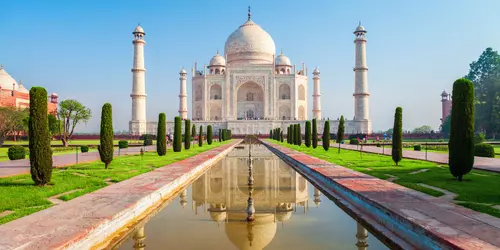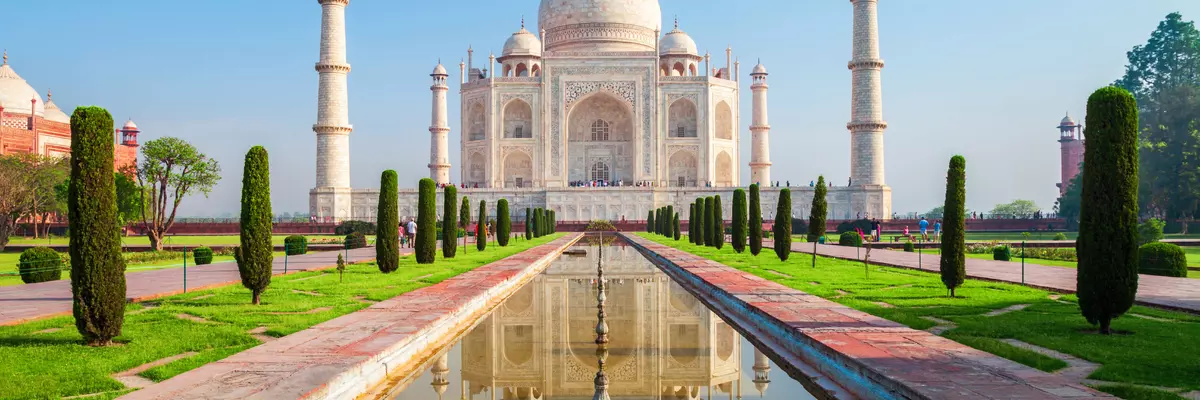Climate Table Agra
Jan | Feb | Mar | Apr | May | Jun | Jul | Aug | Sep | Oct | Nov | Dec | |
|---|---|---|---|---|---|---|---|---|---|---|---|---|
| Max. Temperature | 22° | 26° | 32° | 38° | 42° | 41° | 35° | 33° | 33° | 33° | 29° | 24° |
| Min. Temperature | 7° | 10° | 16° | 22° | 27° | 30° | 27° | 26° | 25° | 19° | 12° | 8° |
| Sun Hours | 8 | 9 | 9 | 10 | 9 | 7 | 6 | 5 | 7 | 9 | 9 | 8 |
| Rain Days | 2 | 2 | 2 | 1 | 2 | 5 | 14 | 14 | 7 | 2 | 1 | 1 |
The climate year of Agra
Agra is located in India's southwest in the state of Uttar Pradesh and is characterized by a continental location and by the so-called steppe climate. The steppe climate is characterized mainly by dryness and a continental climate. It is hot in summer and cool in winter. By European standards, however, cool means spring to summer temperatures. Over the whole year little precipitation is characteristic on average, only the time of the monsoon, the wet time, is an exception. The continental location of Araga and the steppe climate should suggest little vegetation, but the favorable location on the western bank of the Yamuna River creates fertile alluvial land despite the mostly dry climate.
General information about Agra
Agra is the city in India with the most visitors. The city was the center of the Mughal Empire in the 16th and 17th centuries and due to the buildings left behind, which are numerous in Agra, the city holds countless historically relevant monuments. Agra is known worldwide for the Taj Mahal, which was built in 1631 and is a UNESCO World Heritage Site and the seventh wonder of the world. The Taj Mahal is a burial place for the wife of Shan Jahan, a great mogul of India at that time. The tomb was built on an enormous square marble slab in the shape of a mosque. The white beauty of the building attracts many visitors throughout the year. Also a UNESCO World Heritage Site is the so-called Red Fort, another sight of the city. The Itimad-ud-Daula Mausoleum as well as the Akbar Mausoleum are also extremely worth seeing. Agra's history is also one of craftsmanship and artistry. The design of and with marble dates back centuries. Working with gemstones is also traditionally common in Agra, as well as carpet knotting.
Tourism Agra
The climate in Agra is characterized by little rainfall except during the rainy season. It can be classified in the range of steppe climate. When considering the year-round climate, there are three main phases. A phase of heat, a wet phase and a continental, cooler period.
From October to March the temperatures are mild for the conditions of Agras, the remaining months are always hotter and characterized by more humidity. There is very little precipitation in November, December and April, moderate but still little from January to March and in May. Most precipitation occurs during the rainy season in July, August and September, June and October are also characterized by higher precipitation. Microclimates are found in the immediate vicinity of the river due to an increase in humidity. The best season to travel to Agra is from October to February, during the year it gets hotter and hotter from March with tropical peaks in April, May and June. In July and August, heat but also the number of daily hours of sunshine decrease, but the wet season begins.


